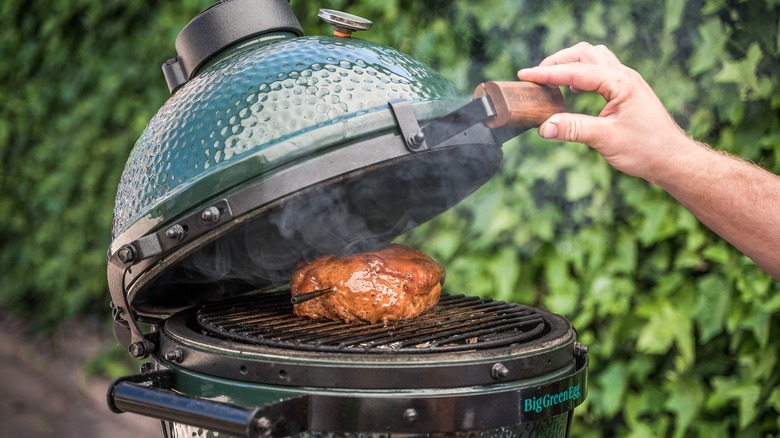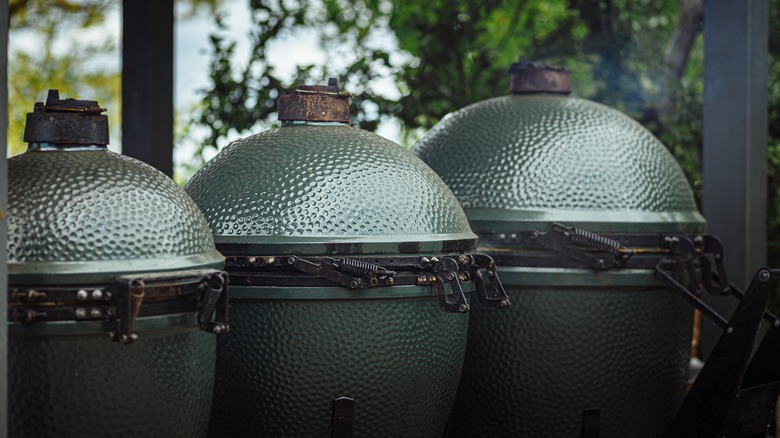What's So Special About The Big Green Egg Grill?
If you've ever explored the grilling side of TikTok, chances are you've come across the Big Green Egg, a popular grill that has actually been around since the 1970s. True to its name, this distinctive looking outdoor cooker resembles a large green egg, standing out from the more traditional black and silver grills. While at first glance you might assume it's simply a pricey novelty for grilling enthusiasts, its unique features extend beyond aesthetics.
What sets a Big Green Egg apart from a regular grill is mainly its material. While it's fueled by charcoal like many other grills, its walls are constructed of ceramic as opposed to metal. This in turn promotes even heating and reduces charcoal consumption. The thicker walls and insulation properties of a Big Green Egg also maintain heat well, which means you can cook food just as efficiently whether you crank the heat to 700 or a low and slow 150 degrees Fahrenheit. With conventional grills, on the other hand, cooking over a low flame typically results in the fire going out.
The Big Green Egg is inspired by a Japanese cooking appliance
While Americans may recognize them as Big Green Eggs, in Japan they're called kamado grills and have been around since as early as 300 A.D. Traditional kamado grills are made out of clay, and much like the modern ceramic version, they have an egg-like shape. The introduction of kamado grills to the U.S. traces back to World War II when American soldiers, impressed by the exceptional food produced, brought them back from Japan. "The first couple times I tasted the food, I thought it was an accident, you know," recalls Ed Fisher, the founder of the Big Green Egg who was one of the Americans stationed in Japan in the '70s, in an interview with Gear Patrol.
Fisher could have easily started manufacturing any other clay or ceramic grill, but there's a reason he also chose to keep the unique egg shape of the kamado: It allows for better air circulation. Combined with the heat-retaining material, this design ensures that the same air circulates repeatedly, ultimately producing more tender meat compared to a grill.
What you can do with a Big Green Egg
Though most refer to a Big Green Egg as a grill, it is capable of doing much more — hence why it's one of the most expensive grills. Japanese kamado grills originally served as rice cookers, but their functionality has expanded to include smoking, roasting, and baking in addition to grilling, with the help of certain attachments.
Turning a Big Green Egg into a smoker is a fairly straightforward process. Inserting a ceramic plate setter ensures indirect heat distribution, while adding wood chips to the charcoal infuses a smoky flavor. All you have to do from there is lower the temperature for smoking. The same ceramic plate setter can also convert the grill into an oven. Placing a pizza stone on top and preheating it as you would an oven then allows for baking or roasting a variety of dishes.
When it comes to grilling, the process is self explanatory, but on top of that, the multiple tiers enable simultaneous grilling of several layers of food. Since outdoor cooking can otherwise be limiting, using a Big Green Egg stands out for allowing you to do more.


